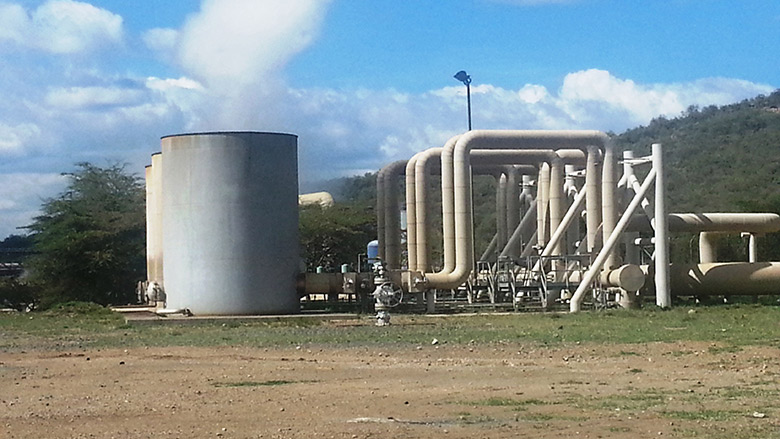DESCRIPTION
By adding a third (35 MW) generator to an existing geothermal plant, the Olkaria II Unit 3 Geothermal Project is expanding Kenya’s renewable energy capacity and contributing about 276 GWh annually to greening the national grid. Located 132 km northwest of Nairobi, the geothermal plant is owned and operated by the Kenya Electricity Generating Company Limited (KenGen).
This geothermal expansion project is earning carbon credits under the Clean Development Mechanism (CDM). It is reducing the equivalent of 149,632 tons of carbon dioxide (CO2 ) per year by displacing thermal electricity that would otherwise be generated by fossil fuels. The project was registered with the UNFCCC in December 2010; the World Bank’s Community Development Carbon Fund is purchasing about 480,000 carbon credits from it.
The project is also using part of the carbon revenue to finance a community benefit plan (CBP) to help poor communities living close to the geothermal plant who depend mainly on farming and livestock. The CBP, designed to address priority needs, was developed in consultation with the beneficiary communities, KenGen, regional chiefs, and local councils.
CONTEXT
Power demand in Kenya is rising considerably due to the country’s economic growth. This rising demand, combined with insufficient investment in new generation capacity, could result in blackouts during peak hours and unreliable supplies of electricity.
KenGen is the country’s major electricity company, supplying about 80 percent of all power consumed nationwide. The country has abundant geothermal and hydropower resources, but investment in new geothermal exploration has been constrained by the substantial capital requirements, by the investment risks, and by limited access to commercial loans. The added revenue stream that carbon finance supplies is therefore a welcome source of finance.
RESULTS AND ACHIEVEMENTS
- As of April 2015, the project has issued 230,901 carbon credits; this equates to a reduction of the same amount in metric tons of CO2.
- An additional 35MW of renewable electricity is being supplied to the Kenyan national grid.
- The Olkaria II Unit 3 Geothermal Project is the first CDM project to issue Certified Emission Reductions (CERs) in Kenya.
- The project’s CBP is financing the construction and improvement of local infrastructure, including (1) a waterpan that can hold water for six months (benefiting 1,500 people and 7,000 livestock); (2) six new school classrooms (benefiting 300 children); (3) a 10-km water pipeline extension to a nearby village (benefiting 2,000 households); and (4) the repair and upgrade of a local road network (benefiting about 5,000 households).
- The project is also providing employment for over 200 local youth during the construction phase.
- The construction and repair of roads, water wells, and water pipelines has helped to reduce the time and physical strain dedicated to collecting water, benefiting women and children in particular.
- The project is recognized as a knowledge center for geothermal development across Africa and visited by schools, universities, and field experts. This is helping to disseminate technical knowledge about geothermal power.
